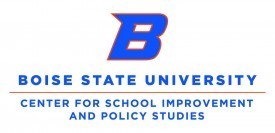Shane Burrup learned a lesson from one of his former students — and from a pocketful of tickets.
Students collected the tickets for good behavior, and they could redeem them for snacks, movie tickets or school supplies. Accidentally, one student’s tickets had run through the wash and were ruined. Rather that shrugging it off, the student asked if there was any way to get rewards. The lesson: positive reinforcement meant a lot to this student, and to all students.
So Burrup held onto the tickets himself.
“I actually framed them and put them up on the wall as a reminder to me,” said Burrup, who is now statewide coordinator for Positive Behavior Interventions and Supports, a program designed to help troubled students by focusing on positive behaviors.
 For PBIS, housed at Boise State University, the trend lines are moving in a positive direction. This fall, 80 schools across the state will participate in PBIS. When the program was moved under BSU’s jurisdiction in 2009, funded by a State Department of Education grant, only 14 schools were enrolled.
For PBIS, housed at Boise State University, the trend lines are moving in a positive direction. This fall, 80 schools across the state will participate in PBIS. When the program was moved under BSU’s jurisdiction in 2009, funded by a State Department of Education grant, only 14 schools were enrolled.
“It’s a lot of word of mouth right now,” said Kelli Burnham, program manager on the PBIS project, “which is exciting for us.”
All told, the PBIS program now reaches 35,000 Idaho students — and teaches schools a systematic program of dealing with discipline issues.
One key is to come up with a consistent, clear matrix of rules — spelling out the expectations so students know how they’re supposed to behave, and teachers know how to enforce the rules. “There’s no guesswork anymore,” Burrup said.
Another key is to recognize that different approaches are best for different students. For about 80 percent of students, a baseline approach is fine. For maybe 15 percent of students, small group intervention is best. The remaining 5 percent of students require more one-to-one attention. Those percentages matter, Burrup said. If a school tries to put too many students through a one-to-one program, resources get stretched quickly.
But another key — and a formula Burrup takes seriously — focuses on positive feedback. For every time a teacher or a principal sanctions a student for misbehavior, they are supposed to point out at least five examples of a student doing the right thing.
A school can figure out any number of ways to reward students who behave. The important thing is the 5-to-1 ratio.
“It’s changing mindsets,” Burrup said. “Unfortunately, it seems like human nature to look for the negative.”
Disclosure: The Positive Behavior Interventions Supports and Idaho Education News are both housed under BSU’s Center for School Improvement and Policy Studies.
